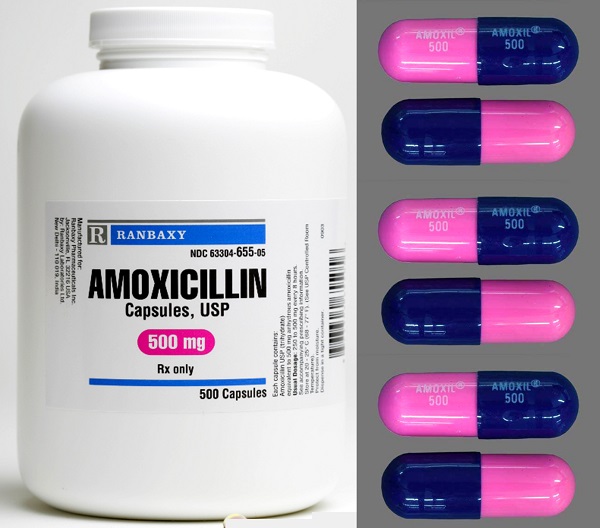 Photo Credit http://thescienceofacne.com/amoxicillin/
Do you know that there are many medications our canine (and feline) companions can take that are the same as those we humans take?
Sometimes your veterinarian will dispense a product that is made just for pets and other times medications will be prescribed that the manufacturer intended for human use.
The size and species of your pet may indicate if a veterinary or human medication is prescribed. Medium and large-sized dogs have body weights that are closer to we humans, so they are more likely to receive prescriptions that are the same as those for people. Small dogs and cats have smaller body sizes, so they are more-likely to need medication that is tailored specifically to their needs. Additionally, cats are notoriously sensitive to the taste of medications, so using veterinary products or compounded medications having appealing flavors or formatted in a manner that the medication cannot be tasted generally works best for our feline friends.
Amoxicillin is a type of antibiotic that can be given in oral or injectable format. Amoxicillin is used to treat a variety of infections that can affect the respiratory and urinary tracts, skin, and other body systems.
Yet, how much, how often, and what Amoxicillin format is most appropriate for your dog are factors about which most owners are not aware. Besides having an unpleasant taste, Amoxicillin can cause side effects, including digestive tract upset (vomit, diarrhea, decreased appetite, etc.).
Learn more via my contributions to this article for PetMD Can Dogs Have Amoxicillin?
Photo Credit http://thescienceofacne.com/amoxicillin/
Do you know that there are many medications our canine (and feline) companions can take that are the same as those we humans take?
Sometimes your veterinarian will dispense a product that is made just for pets and other times medications will be prescribed that the manufacturer intended for human use.
The size and species of your pet may indicate if a veterinary or human medication is prescribed. Medium and large-sized dogs have body weights that are closer to we humans, so they are more likely to receive prescriptions that are the same as those for people. Small dogs and cats have smaller body sizes, so they are more-likely to need medication that is tailored specifically to their needs. Additionally, cats are notoriously sensitive to the taste of medications, so using veterinary products or compounded medications having appealing flavors or formatted in a manner that the medication cannot be tasted generally works best for our feline friends.
Amoxicillin is a type of antibiotic that can be given in oral or injectable format. Amoxicillin is used to treat a variety of infections that can affect the respiratory and urinary tracts, skin, and other body systems.
Yet, how much, how often, and what Amoxicillin format is most appropriate for your dog are factors about which most owners are not aware. Besides having an unpleasant taste, Amoxicillin can cause side effects, including digestive tract upset (vomit, diarrhea, decreased appetite, etc.).
Learn more via my contributions to this article for PetMD Can Dogs Have Amoxicillin?
 Dr. Patrick Mahaney
Thank you for reading this article. Your questions and comments are completely welcome.
Please feel free to communicate with me through Twitter (@PatrickMahaney) and follow my adventures in veterinary medicine by liking Patrick Mahaney: Veterinarian Acupuncture Pain Management for Your Pets on Facebook.
Copyright of this article (2017) is owned by Dr Patrick Mahaney, Veterinarian and Certified Veterinary Acupuncturist. Republishing any portion of this article must first be authorized by Dr Patrick Mahaney. Requests for republishing must be approved by Dr Patrick Mahaney and received in written format.
Dr. Patrick Mahaney
Thank you for reading this article. Your questions and comments are completely welcome.
Please feel free to communicate with me through Twitter (@PatrickMahaney) and follow my adventures in veterinary medicine by liking Patrick Mahaney: Veterinarian Acupuncture Pain Management for Your Pets on Facebook.
Copyright of this article (2017) is owned by Dr Patrick Mahaney, Veterinarian and Certified Veterinary Acupuncturist. Republishing any portion of this article must first be authorized by Dr Patrick Mahaney. Requests for republishing must be approved by Dr Patrick Mahaney and received in written format.